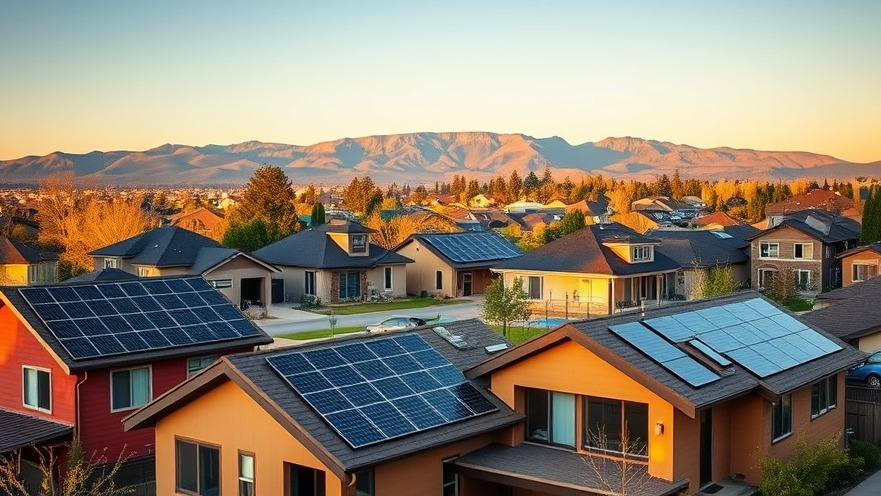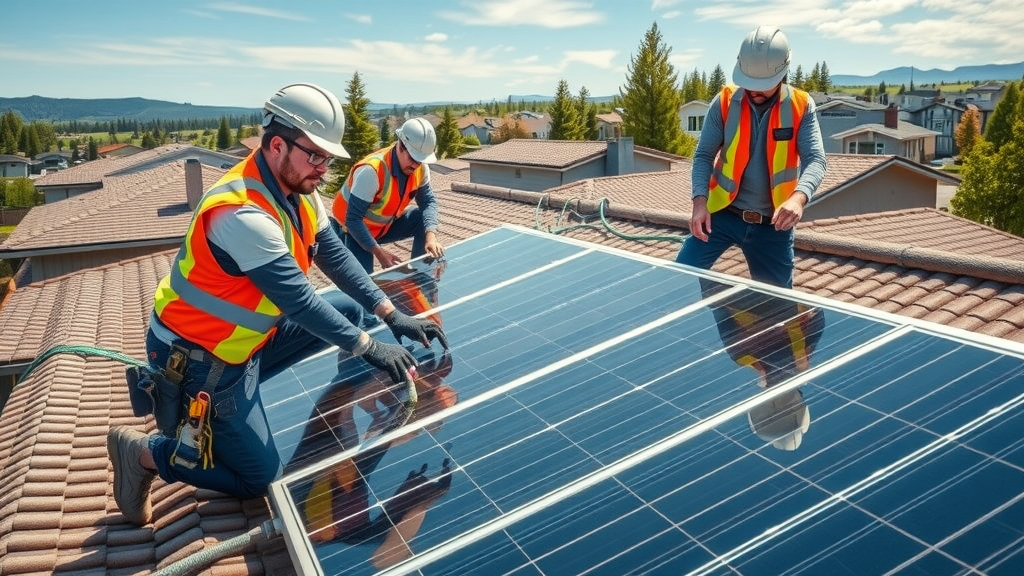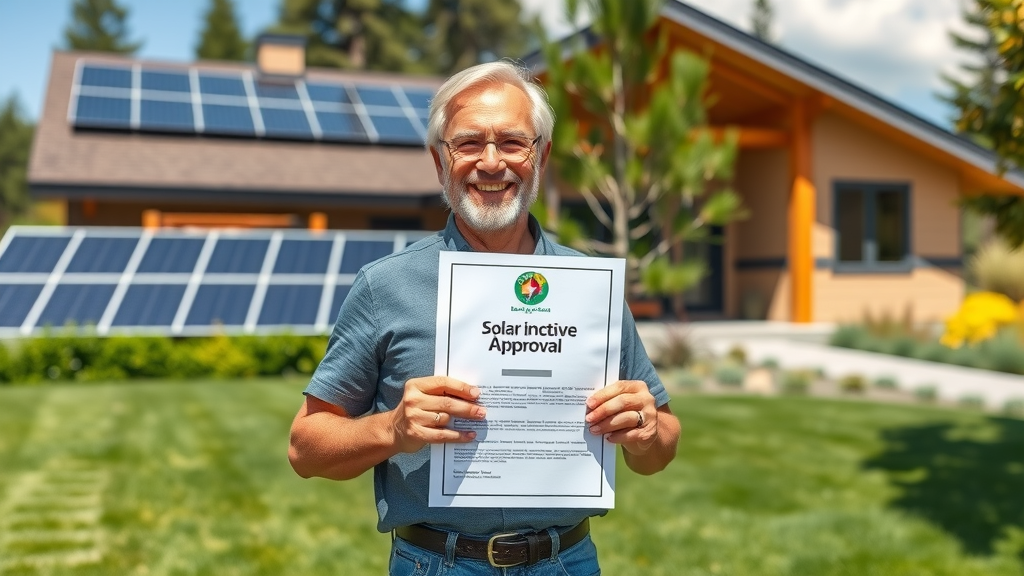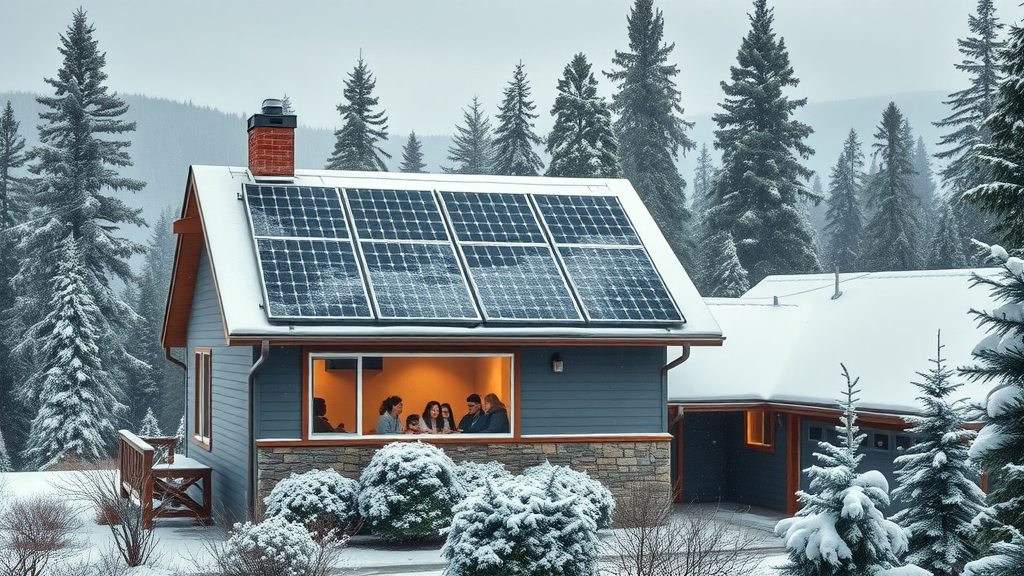Did you know? Over the past five years, the number of homes with solar power systems in Central Oregon has almost tripled—defying the myth that cloudy weather means solar is off the table. With incentives at an all-time high and homeowners reporting major energy savings even on snowy days, it’s time to find out if now is the moment to make the switch. This article delivers everything you need to know about solar power for your home in Central Oregon—clear, practical, and local-focused.
A Surprising Truth: Solar Power for Your Home in Central Oregon is on the Rise
Solar power for your home in Central Oregon isn’t just a trend—it’s a movement. According to the Oregon Department of Energy, residential solar panel installations skyrocketed by over 240% since 2019. While Central Oregon is famously crisp in winter and sees its fair share of cloud cover, solar panels now routinely deliver 70–85% of their rated output year-round. In fact, solar systems don’t need endless sunshine to generate power; state-of-the-art panels are designed to absorb light even on overcast days. That means your home can still achieve impressive energy savings even in the depths of a Bend snowstorm or Redmond drizzle.
Consider local homeowner Lisa P., whose home in Sisters features a 7 kW solar panel system: “I was hesitant at first, but my energy bills dropped by almost 80% during the sunnier months—and even in winter, solar covers nearly half the cost. With the federal solar tax credit and Oregon incentives, my break-even point is under eight years.” Stories like Lisa’s are becoming commonplace as residents discover that investing in solar installations can help slash utility costs and make environmentally responsible choices all at once.

Startling statistic on Central Oregon solar panel adoption rates: Residential installs rose 240% since 2019.
Unconventional fact: Modern solar panels remain effective in cloudy or even snowy weather conditions.
Local homeowner success story: A Sisters resident saw their utility bill drop by nearly 80% during peak months after installing solar panels.
What You'll Learn About Solar Power for Your Home in Central Oregon
The true costs and savings of solar panels in Central Oregon
Which federal and state solar tax credits are available
The latest clean energy trends and local incentives
How to determine if solar power is right for your home
Why Choose Solar Power for Your Home in Central Oregon?
Central Oregon offers a compelling backdrop for residential solar installations. Switching to solar power drastically reduces your carbon footprint and supports the region’s commitment to clean energy initiatives. Local incentives, combined with global clean energy trends, encourage homeowners to invest in systems that immediately add value to their property. Studies show that homes with installed solar panels see an increase in resale and market appeal, often recouping a significant portion of their investment upon sale.
Geographically, Central Oregon’s high elevation and numerous sunny days enhance solar panel performance. Even when occasional clouds or snow pass through, panels continue to capture diffuse sunlight, converting it into reliable renewable energy. Local weather patterns, combined with advanced solar panel systems, make this region uniquely suited for lasting solar savings. Whether you’re motivated by savings, eco-consciousness, or a desire for long-term energy security, making the switch to solar power is a smart step for most households.
Environmental benefits: Reduce emissions and support renewable energy goals.
Increased home value: Solar-equipped homes sell faster and for more.
Local weather suitability: Central Oregon’s sun and elevation power solar panel efficiency year-round.
How Efficient Is Solar Power for Your Home in Central Oregon?
Wondering how well solar power really performs in Central Oregon? The Pacific Northwest is known for its breathtaking landscapes—and surprisingly, Central Oregon ranks above the national average for annual sunlight hours, with many locations receiving more than 190 clear days per year. This abundance of sunlight, paired with modern high-efficiency solar panels, ensures that residential solar systems can generate a substantial portion of the average home’s annual energy needs. According to local performance reports, many Central Oregon homeowners generate between 70% and 90% of their total electricity from their solar panel system, resulting in significant reductions in electric bills.
Beyond climate, case studies from Deschutes County and surrounding areas demonstrate that solar panel efficiency is robust, even through the region's notable winter storms. For example, a 5 kW array in Redmond can typically produce between 6,500 and 7,800 kWh per year depending on placement and shading. The marriage of efficient panels with Central Oregon’s climatic conditions ensures that homeowners can reliably offset a major portion of their annual power needs without extensive maintenance.
Annual sunlight hours: More than 190 clear days per year in Central Oregon.
Climate impact: Solar panels still operate efficiently with snow or clouds present.
Real data: Case studies show up to 90% offset of household power consumption.

Solar Panel Costs and Installation in Central Oregon
How Much Does It Cost to Install Solar Power for Your Home in Central Oregon?
The cost to install solar panels on a standard 2,000 sq ft house in Central Oregon typically ranges from $12,000 to $22,000 before incentives. Factors like your chosen solar panel system type, roof complexity, and installer pricing influence your quote. Fortunately, with federal and state tax credits, the net cost can be reduced by more than 30%. Homeowners who request quotes from several local installers often see a wide range in labor and materials, so it’s smart to compare options. Long-term, most residents recoup their investment within 7 to 10 years, after which ongoing utility bill savings become pure profit. Modern solar panel systems are built for durability, with 25-year warranties common among reputable manufacturers.
Long-term savings are a key motivator—solar installations reduce reliance on volatile utility rates and provide stable, predictable energy costs. Over a 25-year system lifespan, savings often total between $20,000 and $40,000, depending on household use, inflation, and energy prices. Coupled with reduced electric bills and increased home value, solar power for your home in Central Oregon is more accessible and financially viable than ever before.
Typical price range: $12,000–$22,000 for a 2,000 sq ft home (before incentives)
Installer quotes: Always compare multiple bids for best value and warranty.
Long-term savings: Payback periods typically fall within 7–10 years.
What to Expect When Installing Solar in Central Oregon
Choosing the right installer is crucial for a seamless solar experience. Look for certified local professionals with a reputation for quality workmanship and robust warranties—many serve Bend, Redmond, Sisters, and beyond. The typical solar installation timeline goes from design and permitting to completed rooftop install within four to eight weeks. Once permits are secured, most teams finish the rooftop work in just a few days. Homeowners receive in-depth orientation to their system and ongoing maintenance support is minimal; panels generally require only periodic inspection and dust or snow removal to operate at peak efficiency.
After installation, you’ll enjoy a dramatic reduction in your electric bill from day one. Many Central Oregon homeowners also discover new ways to optimize energy use, like shifting appliance usage to peak solar hours. And with manufacturer warranties and installer service guarantees becoming the norm, you’ll have peace of mind about your system’s performance and longevity for decades to come.

How to choose the right installer: Look for certified, experienced local professionals
Solar installation timeline: Typically 4–8 weeks from design to commissioning
Maintenance and upkeep: Minimal—mostly annual checks and panel cleaning
Federal and State Solar Tax Credits for Your Home in Central Oregon
Breaking Down the Federal Solar Tax Credit
A major factor making solar power for your home in Central Oregon so affordable is the federal solar tax credit (also known as the Investment Tax Credit or ITC). In 2024, homeowners can deduct 30% of the entire cost of their installed solar panel system—including equipment, labor, and permitting—from their federal tax bill. This powerful incentive will stay at 30% through 2032, providing stability and predictable savings for new solar customers. To claim it, all you need to do is submit IRS Form 5695 with your annual tax filing. The credit applies to both primary and secondary residences (owned and occupied by you) and eligibility typically hinges on system ownership (not leasing).
By leveraging this federal tax credit, many Central Oregon families save between $3,500 and $7,500 on their initial solar system investment. Don’t wait too long, however—after 2032, the credit percentage is expected to phase down. Planning your solar installation within this incentive window is one of the most powerful steps you can take to maximize your financial return.
Federal solar tax credit: 30% off total system cost (valid through 2032)
How to claim: File IRS Form 5695 with your taxes
Potential savings: $3,500–$7,500 on a typical Central Oregon solar install
Oregon State-Specific Tax Credits and Solar Incentives
Oregon is also known for its commitment to clean energy and offers several strong incentives for residents. Although the state’s renewable energy tax credit program expired in 2017, Central Oregon homeowners still benefit from robust cash rebates, energy trust grants, and zero-interest loan programs. Popular programs include the Oregon Solar + Storage Rebate Program—covering up to $5,000 for solar and $2,500 for paired battery storage, based on income eligibility and system size. For those served by Pacific Power or Central Electric Cooperative, additional rebates can help lower the up-front cost of your solar panel system.
Local energy trusts, like the Energy Trust of Oregon, provide ongoing grants and performance-based incentives. Combining these regional benefits with the federal tax credit can yield thousands of dollars in further savings, streamlining the payback process for new installers. Always consult your local solar provider to ensure you’re receiving every rebate and incentive you’re eligible for.
Statewide rebates: Oregon Solar + Storage Rebate Program, up to $5,000 off
Additional incentives: Utility rebates, local grants, and performance bonuses
Clean energy programs: Tailored for Central Oregon homeowners
People Also Ask: Is it Worth Getting Solar in Oregon?
Is solar worth it for Oregon homeowners? The answer is “yes” for most! Using a cost-benefit analysis, typical Central Oregon families gain a return on investment that rivals or exceeds much sunnier states due to strong tax credits, falling system prices, and local rebates. For an average home, payback periods range from 7–10 years, after which energy generated is essentially free. Solar power meshes smoothly with the Oregon power grid through “net metering,” allowing homeowners to sell excess energy back for bill credits—making your system work overtime for your wallet. Local testimonials echo these findings; many report satisfaction with both climate resilience and noticeable monthly savings even after snowy winters and cloudy stretches.
Detailed cost-benefit analysis: Average ROI realized in 7–10 years
Solar and Oregon’s power grid: “Net metering” enables bill credits on excess solar production
Local homeowner testimonials: Consistently strong satisfaction and savings
People Also Ask: How Much is a Solar System for a 2000 sq ft House?
The typical cost of a solar system for a 2,000 sq ft home in Central Oregon starts from $12,000 but can reach up to $22,000 depending on the quality of panels, structural requirements, and installer charges. This price includes solar panels, inverters, installation labor, and necessary permits. However, after accounting for the 30% federal tax credit and possible Oregon rebates, net out-of-pocket costs often fall between $9,000 and $14,000. The payback period for such a system on a home this size is between 7 and 10 years, with lifetime ROI potentially doubling or tripling your total investment—especially as utility rates increase over time.
Price breakdown: Equipment, installation, and incentives reduce sticker shock
Payback and ROI: 7–10 years to payback, then decades of no-cost energy
People Also Ask: Does the State of Oregon Pay for Solar Panels?

While the State of Oregon does not pay for the full cost of solar panels, it generously offers a range of financial incentives to minimize your expense. Grants through programs like the Oregon Solar + Storage Rebate, as well as participation in local utility rebate programs, can cover a significant portion of installation costs. Income-qualified households may receive higher rebate amounts. The application process involves submitting proof of eligibility and selecting a certified installer—your installer typically manages most of the paperwork for you, making the process accessible and straightforward.
Oregon grants and rebates: Up to $5,000 for solar, additional funds for battery storage
Eligibility: Based on household income and utility provider
Application: Work directly with your certified installer for guidance and submission
People Also Ask: What is the 33% Rule in Solar Panels?
The “33% rule” refers to a smart-sizing guideline for solar panel systems—suggesting that your home’s system should not regularly exceed more than 33% of your peak energy demand fed back to the grid. In practical terms, this ensures your system is well-matched to your home’s consumption, avoids overproduction penalties in net metering rules, and maximizes your return. For a typical Central Oregon home, this rule is a helpful guideline for ensuring your solar installation is sized to practical, cost-effective standards, tailored to your property’s specific solar potential. Speak with a local installer for a precise assessment.
33% rule explained: Prevents oversizing and optimizes ROI
Central Oregon application: Ensures the right fit for your energy needs
Table: Comparing Solar Power Options for Your Home in Central Oregon
Feature |
Solar Power System A |
Solar Power System B |
Average Oregon Home |
|---|---|---|---|
Cost (after tax credit) |
$10,500 |
$13,000 |
$11,200 |
Output (kWh/year) |
7,250 |
6,800 |
7,000 |
Payback Period (yrs) |
8 |
9 |
8.5 |
Panel Type |
Monocrystalline |
Polycrystalline |
Mix |
Key Benefits of Solar Power for Your Home in Central Oregon
Lower energy bills year-round
Increased property value and market appeal
Reduced carbon footprint—a real clean energy impact
Eligibility for powerful federal and state tax credits

Quotes from Central Oregon Solar Power Experts
"The shift to solar power for your home in Central Oregon is not only environmentally responsible but financially wise." – Local Solar Installer
"With state and federal solar tax credits, homeowners can save thousands on installation costs." – Renewable Energy Policy Specialist
Step-by-Step: Getting Started with Solar Power for Your Home in Central Oregon
Evaluate your home's solar potential
Contact certified solar installers for quotes
Review available solar panel options and systems
Apply for federal and Oregon state tax credits
Schedule your installation
Monitor and maintain your solar energy system
Frequently Asked Questions About Solar Power for Your Home in Central Oregon
Will solar panels work in snowy or cloudy Central Oregon weather?
Absolutely! Today’s solar panels are engineered to capture diffuse sunlight, allowing them to work efficiently even on cloudy or snowy days. Snow usually slides right off panels installed at proper angles, and any short-term shading has minimal long-term impact on annual output.How long does a solar panel system last?
Most modern panels come with 25–30 year performance warranties and often last even longer. The inverters may need replacement once per system life (after 10–15 years), but overall, systems require little service and continue producing reliable power for decades.Can I sell excess solar energy back to the grid?
Yes—Oregon’s net metering policy allows you to feed surplus energy into the grid in exchange for utility bill credits, keeping your household energy costs ultra-low and making the most of every sunny day.What maintenance is required for solar panels?
Maintenance is minimal. Generally, a quick visual inspection once or twice per year to clear any debris or snow is enough, along with occasional checks from your installer.

Key Takeaways: Is Solar Power for Your Home in Central Oregon Worth It?
Solar power is a secure investment due to incentives and long-term savings
Oregon's solar tax credits make installations more affordable
Clean energy adoption grows your home's value and reduces emissions
Every homeowner's situation is unique—consult a local installer
Interview and testimonials from Central Oregon homeowners about their solar power systems, showing installations, monthly bills, and outdoor shots of solar panels on various homes.
Conclusion: Start Your Solar Power Journey in Central Oregon
Solar delivers financial and environmental rewards for Central Oregon homeowners
Assess your home’s solar potential now for maximum savings
The future is bright for clean energy—make your move today
Ready to Make the Switch? Get a Free Solar Power for Your Home in Central Oregon Consultation Today!
Take charge of your energy future. Connect with a trusted Central Oregon solar expert for a no-obligation assessment and personalized quote—start on the path to lower bills, a sustainable home, and lasting peace of mind. Contact us now for your free consultation »
 Add Row
Add Row  Add
Add 




Write A Comment